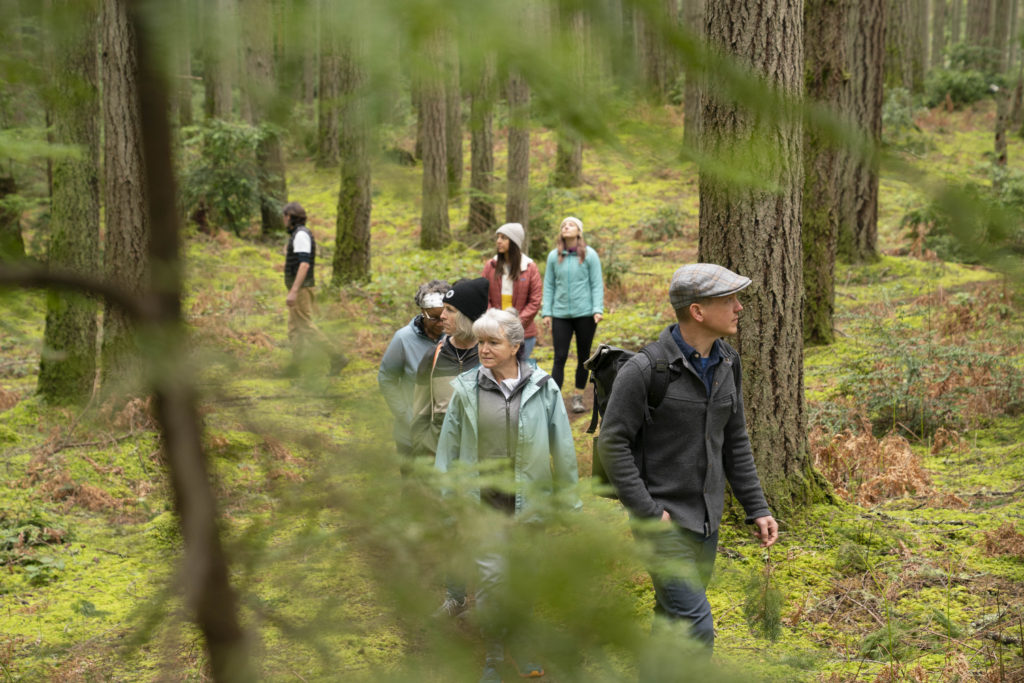Introduction:
In today’s fast-paced world, mental health concerns are increasingly prevalent. Stress, anxiety, and depression affect millions, impacting daily life and overall well-being. While traditional therapies remain crucial, a growing body of research highlights the profound benefits of nature for mental health. This article explores the emerging field of hiking therapy, examining its effectiveness as a stress relief technique and a pathway to improved mental well-being through the healing power of nature. We’ll delve into the science behind nature’s restorative effects, practical tips for incorporating hiking therapy into your routine, and considerations for ensuring a safe and beneficial experience.

The Science Behind Nature’s Healing Power
The connection between nature and improved mental health isn’t merely anecdotal; scientific evidence supports its efficacy. Exposure to natural environments has been shown to reduce cortisol levels (the stress hormone), lower blood pressure, and improve heart rate variability – all key indicators of stress reduction. This effect is attributed to several factors:

1. Reduced Cortisol Levels:
Studies have consistently demonstrated that spending time in nature leads to a significant decrease in cortisol levels. A study published in the journal Environmental Health Perspectives found that even short walks in a park reduced cortisol levels in participants compared to those who walked in urban settings. This reduction in stress hormones contributes to a feeling of calm and relaxation.

2. Improved Mood and Cognitive Function:
Nature exposure has been linked to improvements in mood, attention, and cognitive function. The “attention restoration theory” suggests that natural environments provide a respite from the constant mental stimulation of urban life, allowing the mind to wander and recover. This mental restoration can lead to increased creativity, improved problem-solving skills, and a greater sense of well-being.

3. Increased Physical Activity:
Hiking, by its nature, involves physical activity. This contributes to the overall health benefits. Exercise releases endorphins, which have mood-boosting effects. The combination of physical activity and exposure to nature creates a synergistic effect, amplifying the positive impact on mental health.

4. Connection with Nature and Sense of Wonder:
The experience of being immersed in nature – witnessing the beauty of a forest, feeling the sun on your skin, listening to the sounds of birds – fosters a sense of awe and wonder. This connection with the natural world can have a profound impact on emotional well-being, promoting feelings of peace, tranquility, and gratitude.

Hiking Therapy: A Practical Guide
Hiking therapy isn’t just about going for a walk in the woods. It’s a mindful and intentional practice that integrates the benefits of nature with therapeutic principles. Here’s a practical guide to help you get started:

1. Choosing the Right Trail:
Begin with trails appropriate for your fitness level. Don’t start with an overly challenging hike, especially if you’re new to hiking. Start with shorter, easier trails and gradually increase the difficulty as your fitness improves. Consider factors like terrain, elevation gain, and trail length.

2. Mindfulness and Presence:
Hiking therapy is about more than just reaching a destination. Practice mindfulness by paying attention to your surroundings. Notice the textures of the trail, the smells of the forest, the sounds of nature. Engage all your senses to fully immerse yourself in the experience. Try to let go of worries and anxieties, focusing on the present moment.

3. Setting Intentions:
Before embarking on your hike, set an intention for your experience. What do you hope to achieve during your hike? Are you seeking stress relief, improved mood, or simply a connection with nature? Having a clear intention can help you focus your mind and maximize the benefits of your hike.

4. Safety First:
Always prioritize safety. Inform someone of your hiking plans, including your route and estimated return time. Bring essential supplies, such as water, snacks, a map, and a first-aid kit. Wear appropriate clothing and footwear. Be aware of potential hazards, such as wildlife, changing weather conditions, and uneven terrain.

5. Finding Your Rhythm:
There is no one-size-fits-all approach to hiking therapy. Find a pace that feels comfortable and sustainable. Some prefer a brisk walk, while others prefer a slower, more contemplative pace. Experiment to find what works best for you.

6. Journaling and Reflection:
After your hike, take some time to journal your experience. Reflect on your thoughts and feelings during the hike. Note any changes in your mood or stress levels. This reflective practice can enhance the therapeutic benefits of hiking.

7. Group Hiking and Social Support:
Consider joining a hiking group. This can provide social support and a sense of community, further enhancing the mental health benefits. Sharing the experience with others can create a sense of connection and camaraderie.

8. Incorporating Other Mindfulness Practices:
Combine hiking with other mindfulness practices, such as meditation or deep breathing exercises. These practices can enhance the calming and restorative effects of nature exposure.

Addressing Potential Challenges
While hiking therapy offers numerous benefits, it’s important to be aware of potential challenges:
- Accessibility: Not everyone has equal access to natural spaces. Urban dwellers may need to travel further to find suitable hiking trails.
- Physical Limitations: Individuals with physical limitations may need to adapt their hiking activities or choose accessible trails.
- Weather Conditions: Inclement weather can make hiking unsafe or unpleasant. Always check the forecast before heading out.
- Safety Concerns: Wildlife encounters, injuries, and getting lost are potential risks. Proper planning and preparation are essential.

Integrating Hiking Therapy into Your Routine
To maximize the benefits of hiking therapy, consider integrating it into your regular routine. Aim for at least 30 minutes of hiking several times a week. Consistency is key to experiencing the full therapeutic effects. You might incorporate it into your lunch break, weekend activities, or even your commute if possible.
Conclusion: A Path to Wellness
Hiking therapy offers a unique and accessible approach to improving mental well-being. By combining the restorative power of nature with the principles of mindful movement, it provides a pathway to stress relief, improved mood, and enhanced overall health. While it’s not a replacement for professional mental health care, it can be a valuable complementary therapy, empowering individuals to take an active role in their mental health journey. Remember to prioritize safety, choose trails appropriate to your fitness level, and embrace the journey. Start small, be consistent, and discover the transformative power of hiking for your mental health. Begin your journey today – find a local trail and experience the healing embrace of nature.